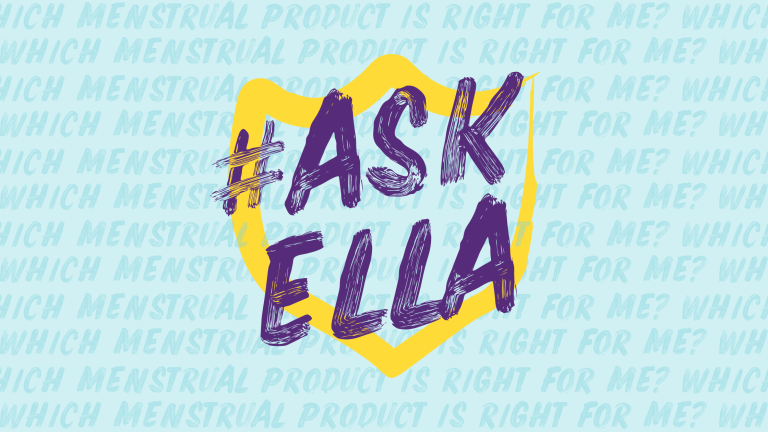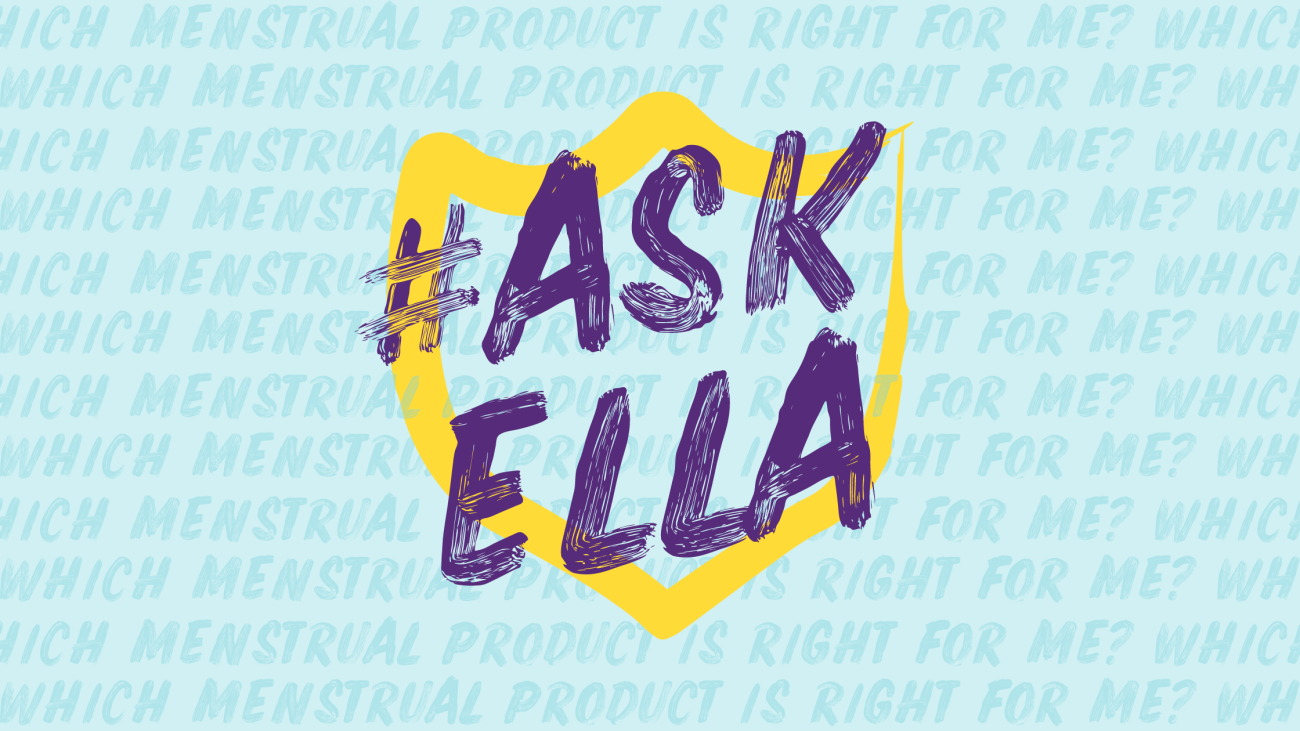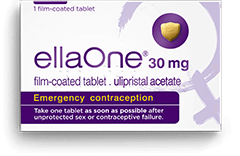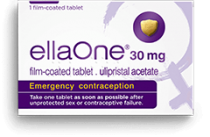Which menstrual product is right for me?
Finding the right menstrual product is a bit like finding the right bra. A different process for everyone and most definitely not ‘one size fits all’. It’s important to find a product that not only matches your flow but also your lifestyle. Come with us as we dive in and explore all the different options available.
Menstrual pads
Most commonly known simply as ‘a pad’, this is likely the product you first reach for when starting your period. You may have also heard this referred to as a sanitary pad, towel or even napkin.
A pad is a piece of absorbent material that you place in the crotch of your knickers to absorb menstrual blood and protect your clothes. There are many different types of pads to choose from, meaning that you are sure to find one that is right for you:
– Slender
– Overnight
– Thong
– Maxi
– Mini
There are disposable and reusable pads, depending on your preference. Disposable pads come with an adhesive back which sticks directly into your underwear. After removing a disposable pad, you can wrap it in loo roll and place it in a bin or a nearby designated menstrual product disposable box (do not flush!).
A reusable pad is washed after every use and often made with snap buttons to clip on to underwear. These are a bit more difficult to find and are unlikely to be at your local supermarket, but can sometimes be found in specific health stores or online.
There are no specific rules for which pad to use, it’s all a matter of personal preference – and you may need to try a few to see what works best for you.
All forms of pads should be changed roughly every 4 – 8 hours or whenever it feels full, helping to prevent rashes, infections and odours.
Tampons
Tampons are likely the second most commonly used menstrual product after pads; they are made of an absorbent material that goes inside the vagina to absorb blood. No need to stress about how to take out a tampon though – they come with a string attached at the end to make removal that much easier! Just gently pull downwards on the string to remove, and then pop the used tampon in the bin. As a general rule, we suggest not flushing tampons, for the sake of saving your plumbing.
Tampons come in many shapes and sizes depending on absorbance or preference. Some come with an applicator, such as a plastic or cardboard tube to help guide the tampon, while others are inserted using a finger. It’s important to find the right tampon for you, to ensure you are comfortable. If your tampon is inserted correctly you should hardly feel it!
Depending on your flow, you should be changing your tampon around every 4-6 hours, or if you begin to leak through or see colour on the string. Tampons should not be worn for any longer than eight hours. By leaving a tampon in for too long, you put yourself at risk for toxic shock syndrome and other bacterial infections, which can lead to serious health problems.
Menstrual cups
A menstrual cup is exactly what it sounds like: often made of silicone or rubber, a menstrual cup is folded and inserted inside the vagina, creating a leak-free seal and suction around the rim, catching blood before it flows out of the vagina. Cups are reusable and can hold more blood than other methods. They can also be worn for up to 12 hours, which is longer than other methods.
Cups come in different sizes ranging from small to large, as well as different shapes. Finding the right menstrual cup for you is dependent on factors such as age, flow, whether or not you’ve had children and what is comfortable for you. You may have to experiment with different sizes and fits before you get your Cinderella moment.
Inserting and removing a menstrual cup is a bit more complex than a tampon so be sure to read the instructions that come with your cup to make sure your insertion technique is correct for your size cup. Cleaning your menstrual cup isn’t like cleaning other reusable menstrual products. Before using your cup for the first time, you should sterilise it in boiling water for no more than 10 minutes, remembering to let it cool down before using it. Following this you can boil between uses or rinse and wash with a specific cleaner or an unscented soap.
Menstrual cups can often be found in pharmacies and some supermarkets, as well as online. They may cost anywhere from £10 to £40.
Menstrual discs
Menstrual discs work in a very similar way to a menstrual cup and can also be worn for up to 12 hours, but there are a few key differences to note. To begin, the shape. A menstrual disc is, as to be expected, shaped like a disc or bowl. Unlike a cup, a disc does not create suction but instead catches and collects your flow.
Another key difference is that a menstrual disc can be worn during sex! And it’s unlikely your partner will feel it. Due to the shape of the disc, it is a slightly messier removal than a cup or tampon. Similarly, there is the risk of ‘auto-dumping’ or ‘self-emptying’, when the disc momentarily moves out of place and can cause some contents of the disc to spill. This can happen when your pelvic floor muscles contract, but the disc will likely return to its original position when the muscles relax.
Free bleeding
Free bleeding is pretty much what it says on the tin. Menstruating without any form of period product to absorb or collect the flow.
There are many reasons why someone may freely bleed. For some, this is simply a matter of feeling more comfortable when in their natural state, or reducing waste to help manage their environmental footprint. For others it can be part of a movement to normalise menstruation, a protest against tampon tax or period poverty, or a fight against menstrual education. We also must acknowledge that for some, free bleeding is more of a necessity due to financial position. Some women and people with uteruses are living in period poverty, in which menstrual products are considered a luxury.
There are different forms of free bleeding; some choose to wear their normal underwear, or no underwear and no protection, while some may opt for period-proof clothing.
Period protective underwear
You may have heard of period pants, a growing trend that doesn’t seem to be going anywhere any time soon. Period protective underwear works by absorbing blood in the same way as a pad, but instead fits and looks like regular underwear. They are leak proof, have no smell and are washable! This is made possible by several layers of moisture-wicking and absorbent antimicrobial fabrics that trap blood and other liquids and stop them from leaking through.
Just like any other period product, period pants come in different shapes and styles to match your preference or lifestyle – from boxer shorts to thongs, and even bikini bottoms for beach days! These underwear can range from £10 to £50, depending on flow or style.
Ultimately, choosing the right menstrual product is a personal decision on what works best for you! It may take some trial and error to get to that point, but the important things to bear in mind are comfort, convenience, flow and lifestyle.
It also doesn’t have to be a ‘one and done’ situation. You do not need to stick to the same period product forever, or even the same product within each cycle! Your preferences and requirements may change over time, or you may choose to use different products on different days, depending on your flow.
The most important thing is choosing a product that allows you to continue being you.




